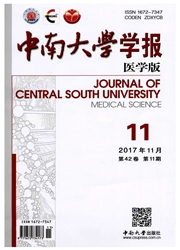

 中文摘要:
中文摘要:
目的:探讨DJ-1基因A39S突变在帕金森病发病过程中的作用机制,以及其是否可能通过转录调控活性导致相关基因表达异常。方法:建立能够稳定表达空载体和野生型DJ-1蛋白,以及A39S突变型DJ-1蛋白的HEK293单克隆细胞株。利用基因芯片技术对不同组别细胞株进行差异性表达基因筛选。结果:与空载体组比较,野生型DJ-1组有14个基因表达上调,28个基因表达下调;A39S突变型DJ-1组有6个基因表达上调;2个基因表达下调;A39S突变型DJ-1组与野生型型DJ-1组比较发现只有1个基因表达下调。具有表达差异性的基因分别参与信号转导、基因转录调控、细胞周期、细胞凋亡、氧化应激等生物学过程。结论:A39S突变型DJ-1蛋白可能通过直接或间接方式对这些差异基因进行表达调控影响这些通路的正常功能,而参与帕金森病的发病。
 英文摘要:
英文摘要:
Objective: To elucidate the role of A39S mutation of DJ-1 in the onset of Parkinson’s disease (PD) and identify genes for which expressions are abnormally regulated by A39S DJ-1 mutation. Methods: We established HEK293 cell lines which stably expressed empty vector, wild-type DJ-1 and A39S mutated DJ-1 respectively. DNA microarrays were used to identify genes for which expressions change in wild-type DJ-1 cells and A39S DJ-1 mutant cells. Results: Compared with the cell line expression empty vector, we identified 42 differentially regulated genes (including 14 up-regulated genes and 28 down-regulated genes) in the wild-type DJ-1 cells and 8 differentially regulated genes (including 6 up-regulated genes and 2 down-regulated genes) in the A39S DJ-1 mutant cells. Compared with the wild-type DJ-1 cells, only the expression of UGT2B7 gene was down-regulated in A39S DJ-1 mutant cells. hTese differentially regulated genes were mainly related to signal transduction, regulation of transcription, apoptosis and metabolism. Conclusion: A39S mutated DJ-1 may disturb the transcriptional activities of DJ-l and involve in the pathogenesis of PD.
 同期刊论文项目
同期刊论文项目
 同项目期刊论文
同项目期刊论文
 Marginal association between SNP rs2046571 of the HAS2 gene and Parkinson's disease in the Chinese f
Marginal association between SNP rs2046571 of the HAS2 gene and Parkinson's disease in the Chinese f Involvement of Bcl-2-associated athanogene (BAG)-family proteins in theneuroprotection by rasagiline
Involvement of Bcl-2-associated athanogene (BAG)-family proteins in theneuroprotection by rasagiline Involvement of Bcl-2-associated athanogene(BAG)-family proteins in the neuroprotection by rasagiline
Involvement of Bcl-2-associated athanogene(BAG)-family proteins in the neuroprotection by rasagiline 期刊信息
期刊信息
